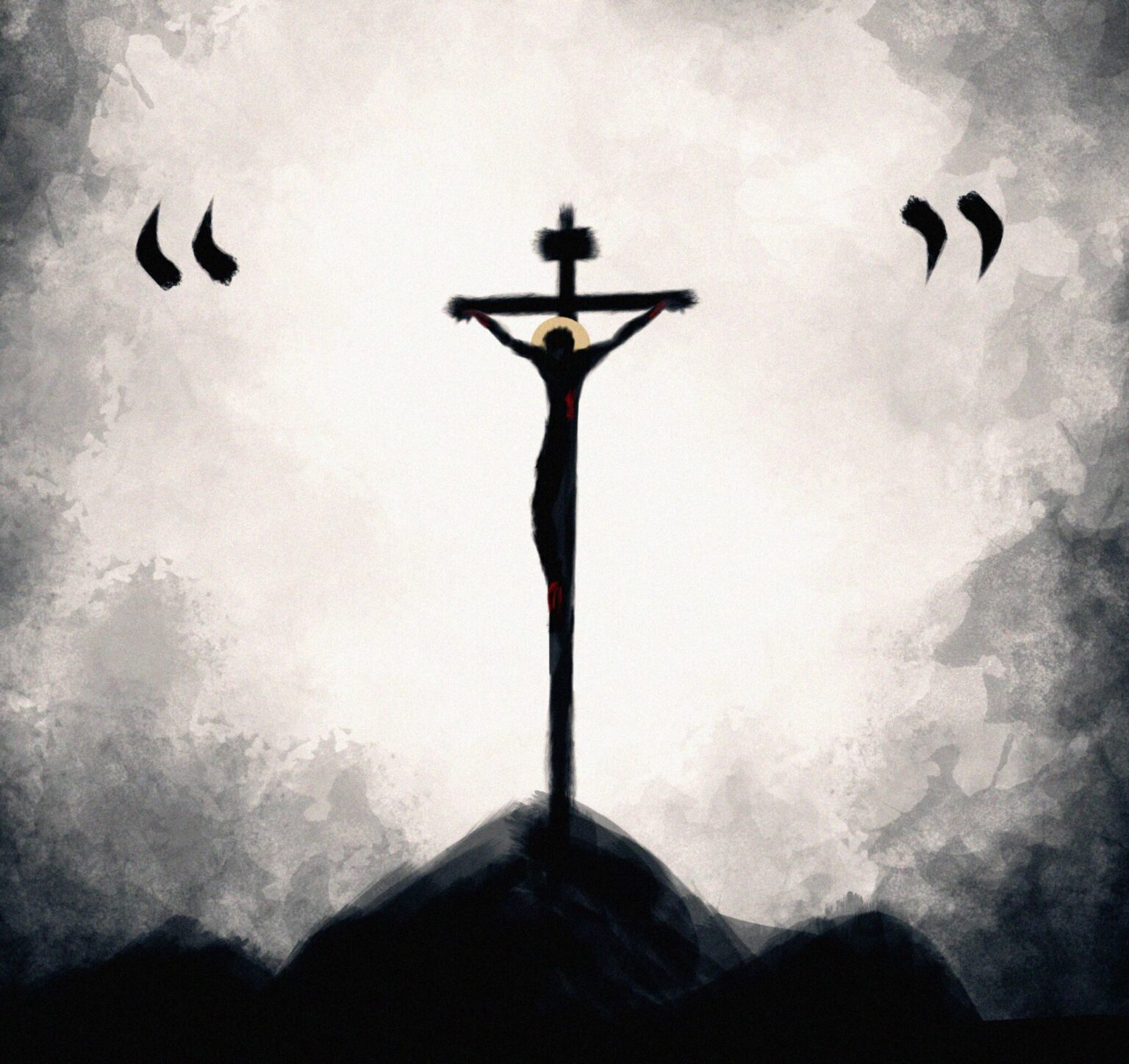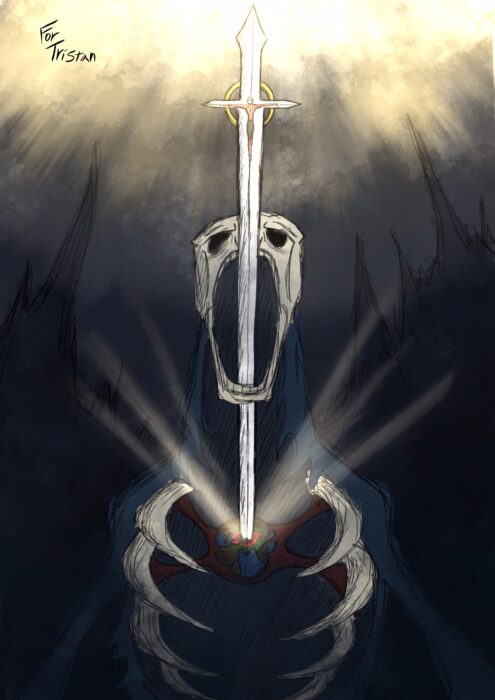“One thing I have asked of the LORD, and that will I seek after: that I may dwell in the house of the LORD all the days of my life, to gaze upon the beauty of the Lord and to inquire in His temple.”
– Psalm 27:4
Where We’ve Been
In the previous installment of this series of blogs on Beauty, we looked at how Edwards’s understanding of the relational nature of the Triune God gives rise to a universe in which relationships between beings are of utmost importance. “Relationality” is woven throughout created reality, and – as such – Beauty itself is a relational concept.
We then looked at the first of Edwards’s four “spheres” of Beauty: Simple Beauty. Simple Beauty, we said, was the relationship of equality or “consent” between two or more objects narrowly considered. According to Simple Beauty, two perfect circles are “more beautiful” than one circle and one oval because there is a higher degree of consent between two of the same shape than between two incongruent shapes. I also mentioned that it is crucial to realize that Simple Beauty has a narrow viewing range, that is to say, it only considers objects in a limited group. This narrow perspective is helpful for establishing the smallest building blocks of Beauty, but the real world is not so narrow.
We live in a universe of trees and mountains and songs and stories and clothing and food and emotions. We don’t have to consider too deeply before Simple Beauty seems unable to explain the myriad beauties that surround us at any given moment, and this is because it is not designed to explain these – that task falls to the next sphere: Complex Beauty.
Complex Beauty
Complex Beauty, like Simple Beauty, is still based on one being’s (or “thing’s”) consent to another, however, where Simple Beauty only considered a few objects narrowly, Complex Beauty takes into account an entire system, structure, or pattern as a whole. Complex Beauty might also be called “Proportional Beauty” since it considers beauty that arises from various consenting proportions within a larger pattern.
For example, in the figure above, [1] AB does not consent to CD. The length of the two lines is dissenting and so, narrowly considered, AB and CD are examples of dissent. However, notice that ABC and BCD are in proportional consent, that is to say, there is a pattern established between these two sets. Even though there is disfigurement at a “lower level” (through a narrower viewing lens), when we “zoom out” to consider the entire pattern, we realize that the dissenting lengths of AB and CD are actually necessary elements in the overarching consent of the entire pattern. What was disfigured when narrowly considered is revealed to be an integral element to the beauty of the whole when more expansively considered. Thus the disfigurement of AB and CD is made, in some sense, beautiful by their key role in the larger pattern.
Being in General
In the figure above the “larger pattern” is ABCD, and that works fine for an example, but what is the “larger pattern” for reality? If beauty is determined by a being’s consent to the greater whole, then the only way to decide whether or not a painting or a song or an experience or a country’s history or a beloved one’s death is truly beautiful or truly disfigured is to know what the overarching pattern of reality truly is. If we “zoom all the way out” and consider everything that exists, what is that grand design by which all beauty is tested?
Edwards called this grand design “Being in General”, which he ultimately defines as God Himself. Now, that is not to say that God is all things (i.e., pantheism), but that “all things are from Him, through Him, and to Him” (Romans 11:36), and thus He is the one who defines the beauty of all things. Something is only truly beautiful if it consents to the nature of God. And what is the nature of God? We will spend an entire post on that in the coming days, for now it is enough to know that the ultimate pattern by which the beauty of any event or object or experience or reality is tested is God Himself, “Being in General.”
Dissenting Beauty
By defining Beauty as an object’s relationship to a greater pattern (and ultimately, to God), Complex Beauty generates some stunning implications, namely that there is such a thing as Dissenting Beauty and Consenting Disfigurement.
Explaining Dissenting (or false) Beauty, Edwards writes:
“That which is beautiful considered by itself separately, and deformed when considered as a part of something else more extended [that is, “Being in General,” God]…is false beauty.”
There are things that seem beautiful when considered by themselves or narrowly considered in relation to a few other things, and yet are exposed as terribly disfigured when viewed in relation to the greater pattern. A simple example of this would be figure 3 from last week’s post, two circles in a pattern made up of pentagons. By themselves the circles seem to consent, in the larger pattern they are revealed to be dissenting.
However, there are more complex examples. Consider the love between a man and woman; that is a beautiful thing. Laughter, self-sacrifice, service, joy – these things are all beautiful, aren’t they? But what if the man in this example is married to another woman and the woman is married to another man?
Suddenly what was beautiful narrowly considered (laughter, love, self-sacrifice, etc.) is revealed to be disfigured and ugly in relation to the larger pattern. Adultery abuses the vows of marriage, exalts self above other, tramples the trust of the wronged spouse, and is an instance of rebellion and hatred against God – for all of these reasons and more it dissents from the larger pattern of reality. The love within an adulterous relationship is an example of Dissenting Beauty ….something beautiful considered “by itself separately” and yet “deformed when considered as a part of something else more extended.”
The world is diabolically skilled at presenting Dissenting Beauty as if it were true Beauty. Pleasure is beautiful, but pleasure derived from something opposed to God is dissenting beauty. Love is beautiful, but love that disregards the good designs of our Creator is dissenting beauty. Boldness, strength, adventurousness, attractiveness, kindness, humility, courage, all of these things are beautiful considered in and of themselves – but they are not necessarily beautiful in all situations. They can all be experienced in a context of dissent to the larger pattern of reality (namely, God Himself) and so become instances of dissenting beauty, which is no beauty at all.
Consenting Disfigurement
However, there are also instances of Consenting Disfigurement, something that really does consent with the greater pattern even though it seems, at first glance, to be an instance of dissent. A simple example of this is the figure above. AB and CD seemed to be “disfigured” when compared to each other, but when considered in relation to ABCD, we saw that they consented with the whole pattern.
The concept of Consenting Disfigurement has powerful implications for “the problem of evil,” and how we grapple with the horrific events in our lives and in the world. It also explains how a withered missionary woman who’s poured out her life in love is more beautiful than flawless model who lives for self, or how a painting of agony and suffering tinged with hope can bring tears to our eyes while the polished universe of Thomas Kinkade rings hollow to our hearts. The most gripping instances of beauty in this world are – I believe – instances of Consenting Disfigurement. However, for the sake of time, I’m going to mention and briefly examine just one such instance, the greatest one of all: the crucifixion of Jesus Christ.
If God Himself is the great pattern by which all beauty is judged, then the murder of God Incarnate at the hands of His own creatures is the most dissenting event in all of reality. There is nothing more perverse, nothing more disfigured, nothing more abominable than what took place on Golgotha on the first Good Friday. And yet, it is the pinnacle and incarnation of Beauty.
How can this be? I will be devoting an entire post to the beauty of the cross in a few days, but for now suffice to say that the supreme disfigurement perceived in our narrow consideration of the cross, is – when seen within the pattern of the whole – the act of supreme consent. There are a number of reasons that this is so (again, I’ll be talking about these things more fully later), but the greatest of these is that, on the cross Jesus was perfectly and climactically communicating the Name and Nature of God to creation (John 1:14, 8:28, 17:26). In His death, Jesus makes God known, and there is nothing more beautiful than that.
The agony of Calvary, when viewed in relation to God and His redemptive purposes for creation, is the most beautiful reality conceivable, and so is the chief example of Consenting Disfigurement.
Drawing Things Together
This has been a long post and we’ve covered some massively significant things. The implications flowing out of Edwards’s concept of Complex Beauty are startling and I hope to continue to unfold them in the coming installments. For now, though, it is enough to understand this:
Because God is the Creator and source and goal of all things, He Himself is the “pattern” by which all beauty must ultimately be judged. There are things that seem beautiful until they are revealed to in dissent with the pattern of God’s character and purposes – these things are instances of Dissenting “Beauty”. However, there are also things that seem disfigured until they are examined in relation to God’s character and purposes and are thus revealed to be deeply beautiful – these are instances of Consenting “Disfigurement”. As JRR Tolkien has said, “All that is gold does not glitter.”
May we be the sort of people who know God from His word and so are able to “read” the beauties of the world. May we recognize Dissenting Beauty for what it is and not call “beautiful” what God calls abominable. And may we see through the veil of disfigurement that hangs so heavily over our fallen world and perceive the sovereign and beautiful works of God in people and events and truths that seem – on the surface – to be anything but beautiful.
There is much more to be said, and – by God’s grace – we will look more into these things in the coming days.
[1] This figure and example are drawn directly from Edwards’s essay on the mind, Works of Jonathan Edwards, Volume 6, Scientific and Philosophical Writings, ed. Wallace E. Anderson, (New Haven Yale University Press, 1957-2008), 334





